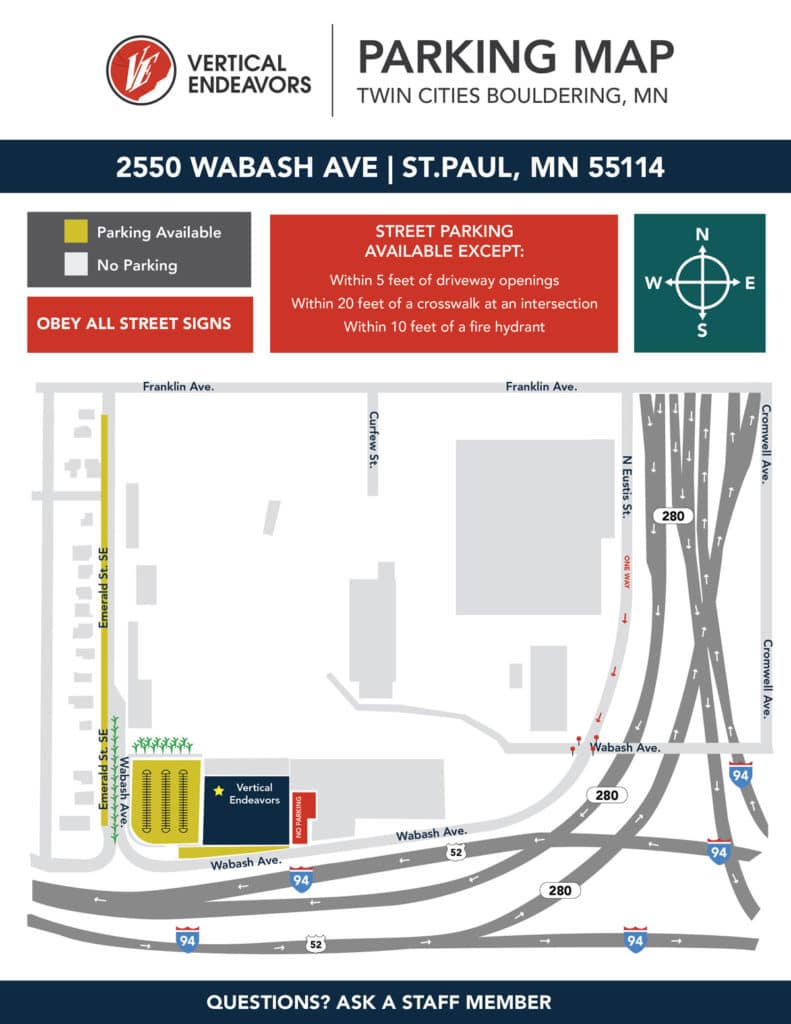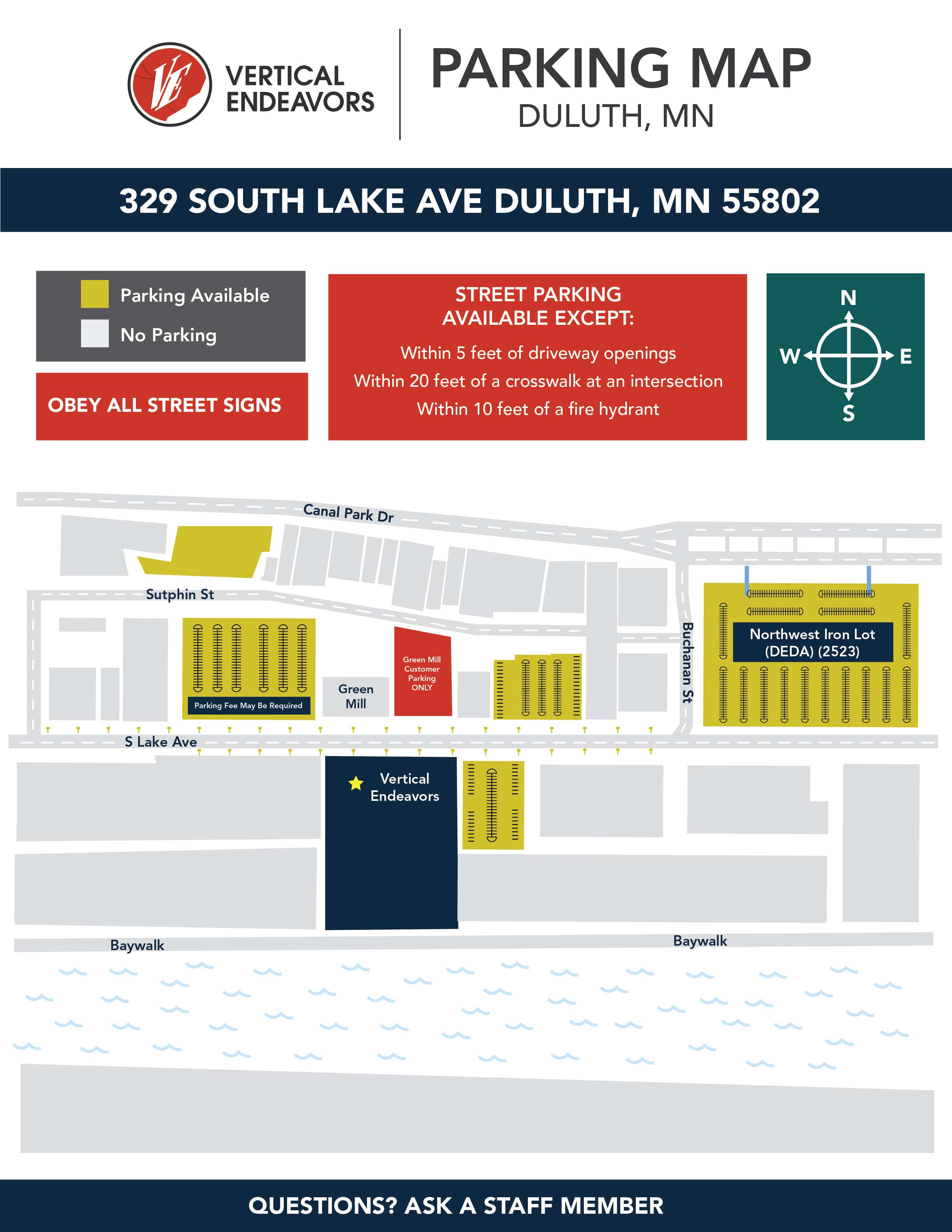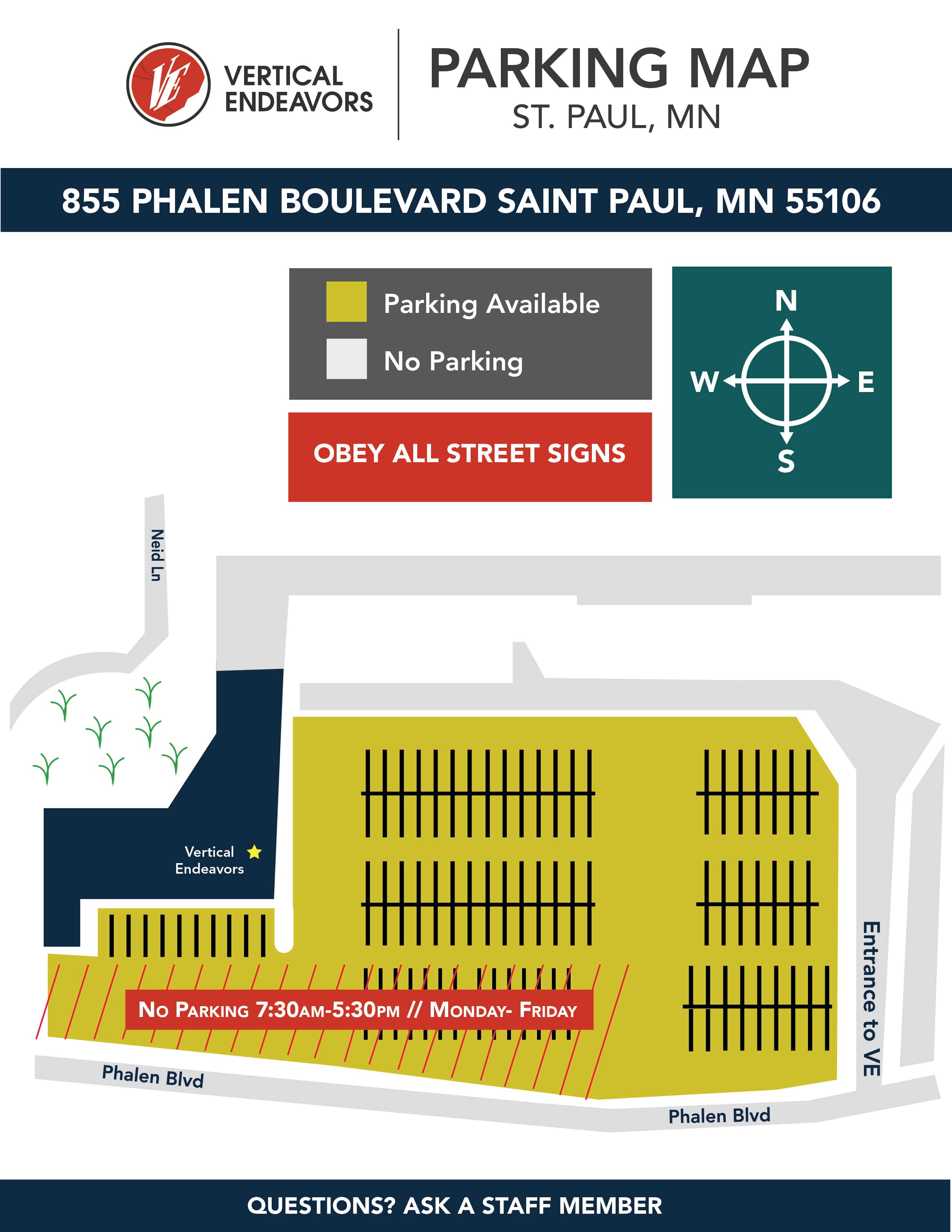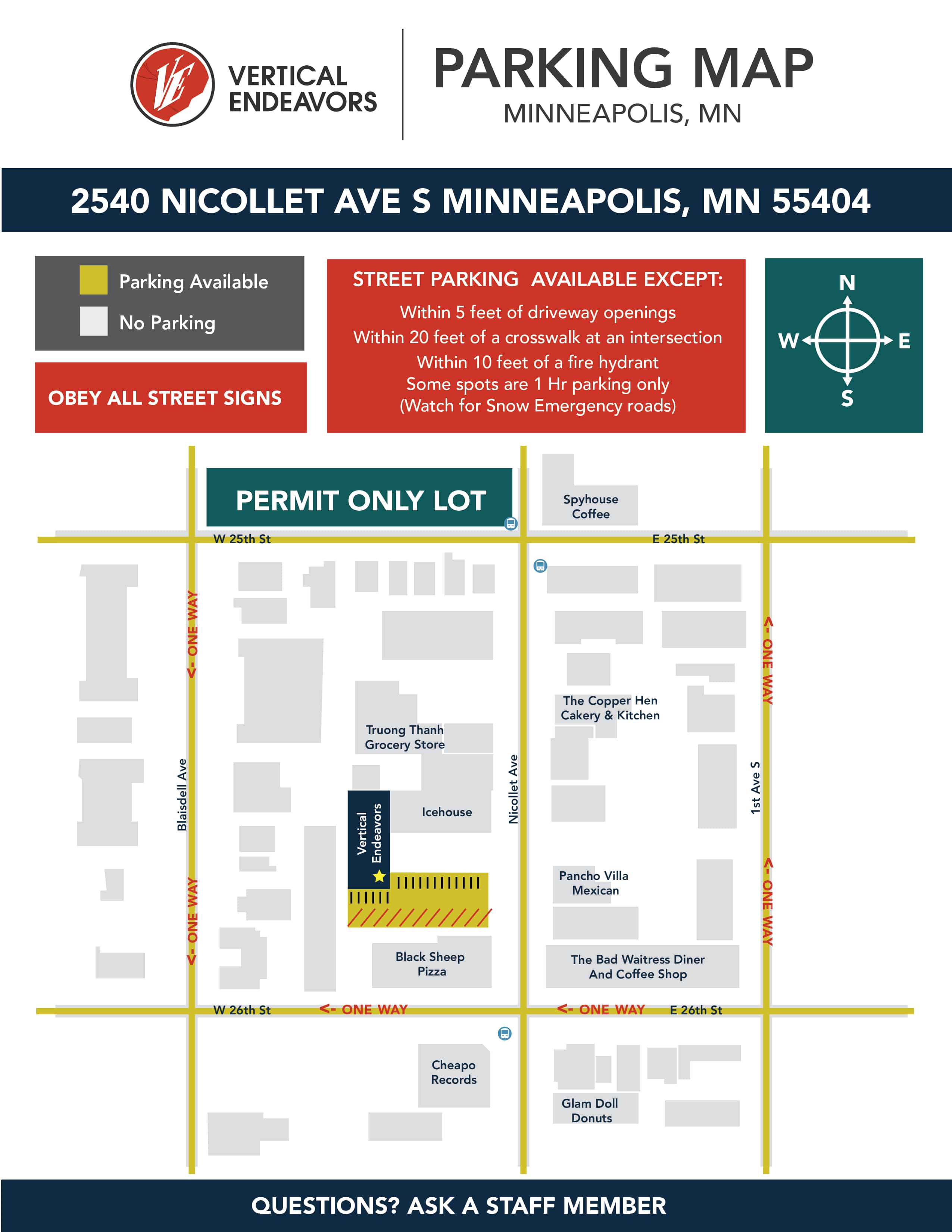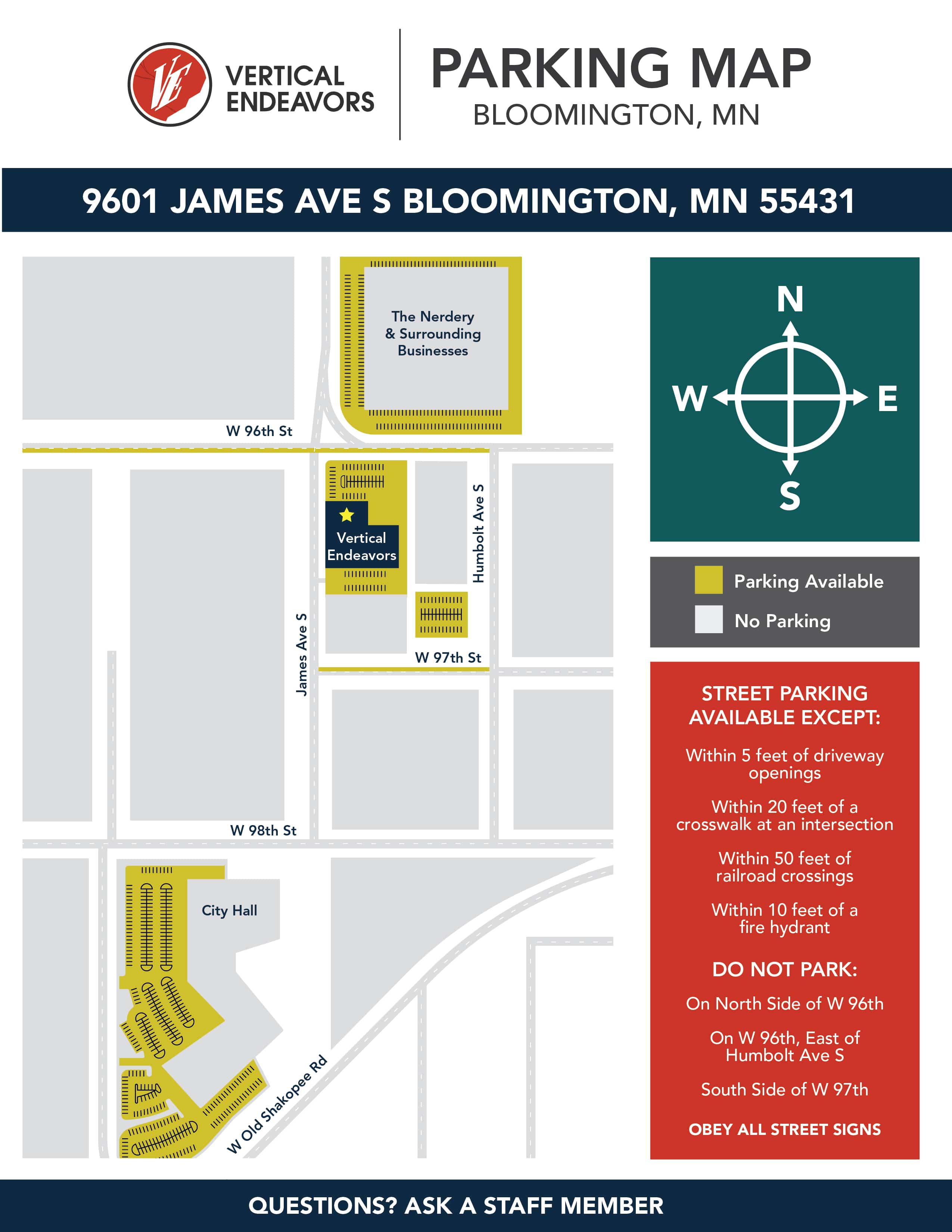You Might Be a Gumby If…
PART 2
Gumby (noun)
guhm·bee | gu̇mbē
An inexperienced, unknowledgeable, and/or oblivious climber; one who lacks coordination, common sense, or know-how.
Experienced climbers can spot and cast contemptuous glances at Gumby climbers. However, we should not be too quick to disdain new climbers. They keep our sport alive, interesting, and exciting. Their sense of awe and adventure can be contagious. Their presence and participation support our indoor climbing facilities, programs, and events. Additionally, all climbers must remember that everyone must start at the beginning, learn the ropes . . . (pardon the pun).
In Part 1 of this article, I noted that among us there are “perma-Gumbies,” those who display Gumby-like behaviors, intentionally or unintentionally, all the time. Others are still improving and developing as climbers desiring to grow out of some of the Gumby characteristics. Even the most experienced climbers should strive for continuous improvement. They say that identifying the problem is the first step to correcting it. I would add recognizing our own Gumby-ness will help us grow as a climber.
Part 2 will highlight a few more Gumby characteristics and offer some advice on how to improve. You might be a Gumby if you . . .
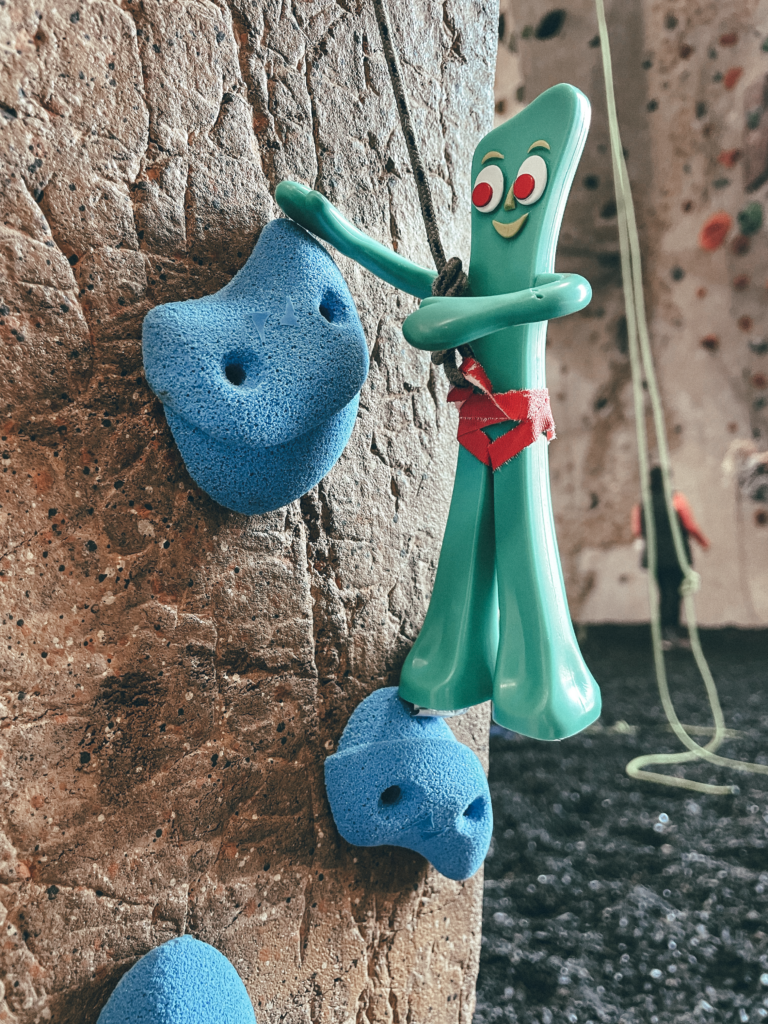
1. Always pull up with your arms when you climb.
Maybe it is just a macho thing, but guys generally begin climbing by pulling up with their arms. Ladies show more finesse at first and utilize the strongest muscles . . . our legs! Experienced climbers know that you can climb stronger and longer if you use your legs to lift and save your arm strength for when you really need it! To do this, practice dropping your weight onto straight arms (you are hanging from your skeletal system and not using muscles as much) and then lifting with your legs.
2. Kick and smash your feet against the wall.
Speaking of climbing with finesse! Good footwork is essential for good climbing. Precise foot and toe placements will keep you from expending needless energy flailing for a secure foothold. Additionally, learning to smear, toe/heal hook, use opposition, and toe/foot jam will add other tools to get up more difficult routes. Try to climb as silently as possible, without kicking and bumping into the wall.
2. Spray useless or unsolicited beta.
“Reach up!” “Pull up with your arms!” etc. Most people enjoy figuring things out for themselves, and chances are they will figure it out on their own. We usually learn better from our failures anyway. Besides, the helpful hints we offer may not be wanted, useful, or correct. If someone asks, of course, give them advice. Otherwise, be encouraging and cheer your fellow climbers on without spraying!
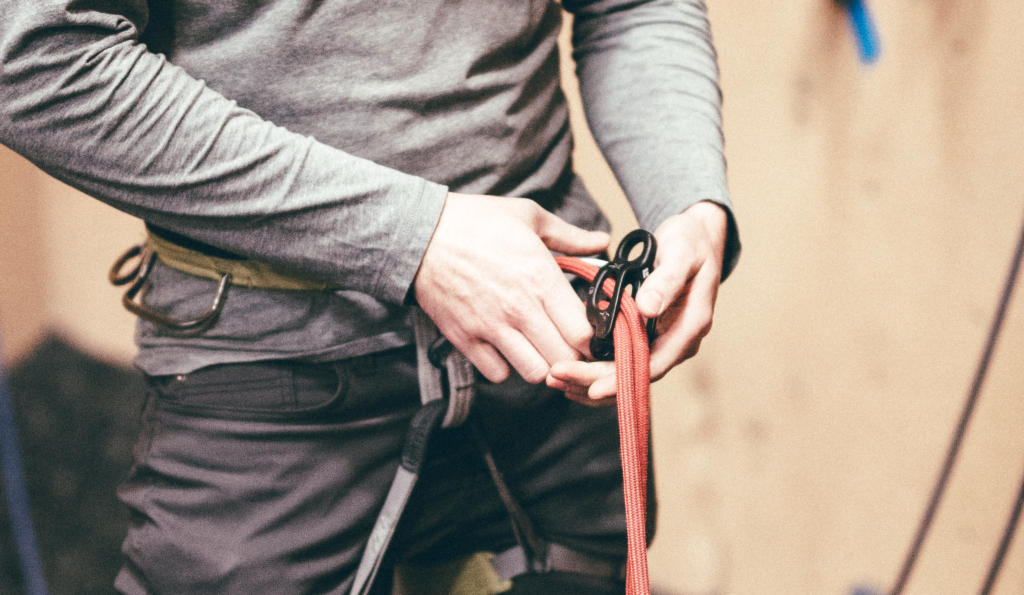
4. Keep your belay device attached to their belay loop.
. . . all the time. Of course, there are those “senior moments” where we forget and keep our belay device dangling awkwardly from our “harness area!” However, I refer to those individuals that just wear their belay device and locking carabiner and walk around the facility oblivious that they are telling everyone they are a Gumby. I just wonder if they are lazy or forgetful. Either way, I would want my climbing partner to more aware than that!
5. You grunt, yell, or scream obscenities as you fall off or flail up the climbing wall,
especially when it is crowded, or young children are around. Not everyone wants to hear your frustration or how hard you are trying. We especially do not want to hear vulgarities screamed across the gym. Remember, climbing is supposed to be fun, and indoor climbing facilities tend to be multigenerational. Keep the volume at a reasonable level and your language in check.
6. Wear headphones while climbing.
It is really not a good idea to be on the wall with music blaring in your ears. Shutting out the world around you is good for meditation, relaxation, and “veggin’ out!” However, when climbing you need to be able to hear other’s commands, warning shouts, or instructions. Even if you are just bouldering by yourself in the corner, headphones may prevent you from realizing a small child has just escaped their parent and has run underneath you. It also violates Vertical Endeavors Rules & Warnings.
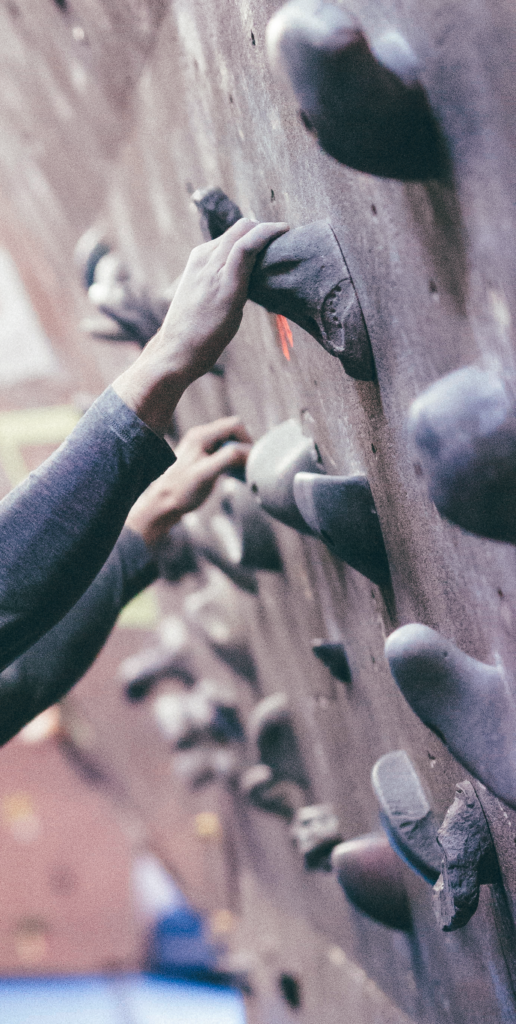
7. Have poor climbing etiquette.
Cutting in line, not waiting your turn to climb a route, climbing barefoot, wearing climbing shoes into the restroom, etc.
While these are some of my absolute pet peeves, there are are serious health reasons why some of these are bad form. Climbing shoes should remain on the mats and climbing walls only. Climbing shoes are made out of sticky rubber to help you stay on the wall. When you keep your shoes on to move around to different locations, your shoes will pick up dirt, chalk dust, grime, bacteria, germs, . . . well, you get the idea. Now imagine these dirty shoes stepping on the holds you are planning to climb. Everything that is on that shoe is now on your hand. YUCK!
Bring sandals or shoes that can slip on and slip off. Take your climbing shoes off when you go outside to the parking lot, go to the restroom, move from one area to another! Also, the rubber on the climbing shoes do wear rather quickly. You want to preserve the shoes as long as possible. Therefore, it is best to remove them after you are done with a route. Take them off when you are not climbing. . . especially if you are walking into the restroom! Do I need to get any more graphic?
8. Leave your personal things at the base of the route or bouldering wall.
Besides showing a lack of consideration for others, it is actually dangerous to leave your possessions lying around. You do not want to land on anything hard or uneven when you fall from a height. Don’t “yard-sale” your stuff in the fall zone. Set your harness, phone, water bottle, chalk pot, and backpack away from the climbing wall and fall zone. Then, you do not have to worry as much about someone rolling their ankle on your stuff.
9. Have bad or lack of proper communication.
Miscommunication is one of the major causes of climbing accidents, and poor communication is the mark of both a Gumby and a poorly prepared climber. You want to be concise and clear. Calls should be short, simple, and easily distinguishable from other commands. Some standardized calls are used widely such as “on belay,” “belay on,” etc. Do not become lax and take for granted that these basic safety precautions have been checked and always confirm with a new partner that you use and understand the same commands.
9. Asking. For. A. Take. Every. Other. Move.
Being nervous on that first climb is understandable. Realizing that you can call for a “take” and your belayer will tighten the rope made you feel more secure and calmed your fear… a little. Then, you start climbing more routes and realize that you can yell “take” and get a reprieve from those burning forearms or Elvis legs. You ask for take again and again as you try more difficult routes. Your belayer’s neck is straining from extended time looking up at you hanging in mid-air… resting.
It can become a bad habit because we like the comfort of feeling a tight rope, the security that I will not take a whipper of a fall with too much slack, and the opportunity to get a second wind. I feel less anxious knowing that my belayer has my back by feeling that the rope is tight. But, it is a sure sign of a Gumby to climb up a route in three to five foot spurts. Trust your belayer and feel the burn! You will grow as a climber by pushing yourself and by trusting your partner to catch you when it is necessary.
Growing and learning is a part of life. Working on improving techniques and eliminating bad habits is an important part of becoming an experienced climber. There is a little Gumby in all of us! Where would you like to improve?
Climbing is dangerous, it involves inherent and other risks and cannot be eliminated. The information presented here does not describe all of the risks associated with climbing and is not intended to replace or supersede expert instruction and training.
© 2023 Vertical Endeavors, Inc. All rights reserved. The contents of this article, photographs, and graphical representations are protected by U.S. and International copyright laws. Reproduction and distribution, in part or whole, without written permission from Vertical Endeavors are prohibited. The opinions and information contained in this article are for entertainment and informative purposes. They are those of the author and may not represent those of Vertical Endeavors, and do not necessarily reflect the ideas, ideologies, opinions, or points of view of the organization, affiliates, owners, stockholders, partners, suppliers, licensors or staff. Under no circumstances shall Vertical Endeavors or any entity that are, have been, or will be affiliated be liable for any indirect, incidental, consequential, special, or exemplary damages arising out of or in connection with the information contained in this article.



